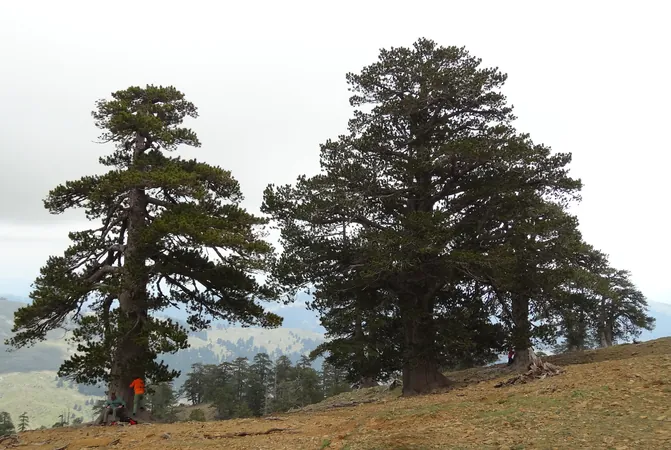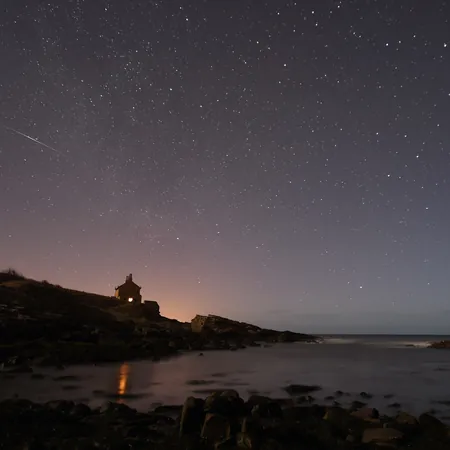
Unveiling the Secrets of the Jet Stream: How Tree Rings Helped Predict Extreme Weather in Europe
2024-09-25
Introduction
This summer, a seemingly ordinary trip led University of Arizona professor Valerie Trouet to unveil groundbreaking insights into the complexities of Europe's climate. During her visit to Belgium, she observed a curious phenomenon: on overcast days when locals donned sweaters, countries like Italy, Greece, and the Balkans were basking in uncharacteristically warm and dry weather. This spark of intrigue set her on a scientific quest to uncover the relationship between tree rings and Europe’s fluctuating summers.
At the esteemed Laboratory of Tree-Ring Research, Trouet and her team analyze tree rings—nature’s own climate recorders—to deduce historical weather patterns, similar to how linguists interpret ancient scripts. In an innovative endeavor, Trouet gathered an international team to collect tree-ring samples from across Europe, leading to the first-ever reconstruction of the jet stream's behavior over the past 700 years, as published in the journal *Nature*.
Understanding the Jet Stream's Influence
Jet streams, the swift rivers of air in Earth’s upper atmosphere, play a pivotal role in determining the climate across Europe. These atmospheric currents are not static; they shift in response to varying high- and low-pressure systems, leading to significant seasonal changes. Trouet explained that when the jet stream positions itself further north, the British Isles experience cooler, wetter weather, while the Mediterranean region endures heat and dryness. This phenomenon, known as a “climate dipole,” has profound implications for current extreme weather events across the continent.
Ellie Broadman, a key contributor to the research, pointed out the concerning connection between these jet stream variations and alarming weather patterns observed today—like the flooding that's devastated parts of Central Europe. The study revealed that hotter conditions in the Balkans enhance evaporation from the Mediterranean Sea, resulting in increased rainfall in northern regions. As the jet stream shifts south, it brings drier air to the British Isles and cooler, wetter conditions to southeastern Europe.
Reconstructing History Through Tree Rings
While direct measurements of the jet stream date back to the late 1940s, the team skillfully utilized tree rings as proxies to extend this timeline by centuries. Each tree adds a growth ring each year, consisting of lighter wood in spring and denser wood in summer, allowing scientists to piece together climate history. Trouet emphasized the thrilling connection between microscopic wood features and atmospheric phenomena many miles above.
Remarkably, the historical records from Europe, rich with details from monks documenting storms in the 600s to extensive records of harvests and epidemics, corroborated the findings. The research revealed that the jet stream's patterns significantly influenced societal events over the past 700 years—such as the grim outbreaks of epidemics in the British Isles corresponding to a northern jet stream position.
Catastrophic Consequences and Future Predictions
During the catastrophic Black Death pandemic of 1348-1350, the jet stream was notably positioned far north, aligning with the wet and cold summers that forced populations indoors—creating ripe conditions for disease spread. These historical insights are imperative for contemporary climate modeling. Broadman stated, “Understanding these past patterns is crucial as we navigate the challenges posed by climate change and increasing greenhouse gas emissions.”
Furthermore, Trouet and her team identified concerning trends indicating a gradual northward shift of the jet stream. This change poses potential threats to crop yields and could trigger more frequent extreme weather events, including wildfires. As evidenced by the escalating wildfires in the Balkans, which are exacerbated by the current jet stream configuration, the research underscores the need for proactive climate monitoring.
Conclusion: A Call to Action
The revelations from this study are not just academic; they illuminate the critical need for society to adapt to evolving climate conditions. Trouet emphasized the urgency: “Recognizing patterns in how the jet stream affects weather can help predict and prepare for future extremes.” As we observe these shifts firsthand, it is imperative for scientists, policymakers, and communities to collaborate and address the impending challenges posed by climate change, armed with insights drawn from both tree rings and historical data.
This extraordinary fusion of nature and science holds the key to understanding our planet's climate dynamics better and preparing for the extremes that lie ahead.









 Brasil (PT)
Brasil (PT)
 Canada (EN)
Canada (EN)
 Chile (ES)
Chile (ES)
 España (ES)
España (ES)
 France (FR)
France (FR)
 Hong Kong (EN)
Hong Kong (EN)
 Italia (IT)
Italia (IT)
 日本 (JA)
日本 (JA)
 Magyarország (HU)
Magyarország (HU)
 Norge (NO)
Norge (NO)
 Polska (PL)
Polska (PL)
 Schweiz (DE)
Schweiz (DE)
 Singapore (EN)
Singapore (EN)
 Sverige (SV)
Sverige (SV)
 Suomi (FI)
Suomi (FI)
 Türkiye (TR)
Türkiye (TR)